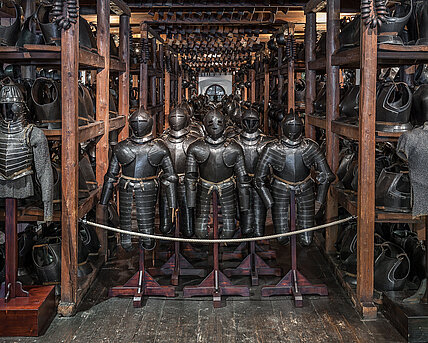The largest preserved historical armoury in the world is one of the most popular sights in Graz and is a reminder of a conflict-ridden chapter in Styrian history. The provincial arsenal was built during a turbulent period: from the 15th to the 18th century, Styria had to fend off several raids by the Ottoman Empire and Hungarian rebels. The arsenal, built between 1642 and 1644, served as an "equipment center" for simple foot and cavalry soldiers for around 100 years. Today it is both a monument and a museum: around 32,000 pieces of war equipment are on display in the Styrian Armoury (german: Landeszeughaus).



















![Styrian Armoury [Translate to English:] Fassade Landeszeughaus](/fileadmin/_processed_/9/b/csm_fassade_schraeg_von_unten_quer_a5bc67856a.jpg)

![Styrian Armoury [Translate to English:] Fassade Landeszeughaus](/fileadmin/_processed_/1/2/csm_fassade_schraeg_von_oben_quer_ef0ec0b71b.jpg)
![Styrian Armoury [Translate to English:] Fassade Landeszeughaus](/fileadmin/_processed_/9/b/csm_fassade_schraeg_von_unten_quer_d82eb591c7.jpg)




![Styrian Armoury [Translate to English:] Landeszeughaus Fassade](/fileadmin/_processed_/c/6/csm_Landeszeughaus_Fassade_06_d29ea35781.jpg)
![Styrian Armoury [Translate to English:] Landeszeughaus Fassade](/fileadmin/_processed_/5/7/csm_Landeszeughaus_Fassade_12_ad31383439.jpg)